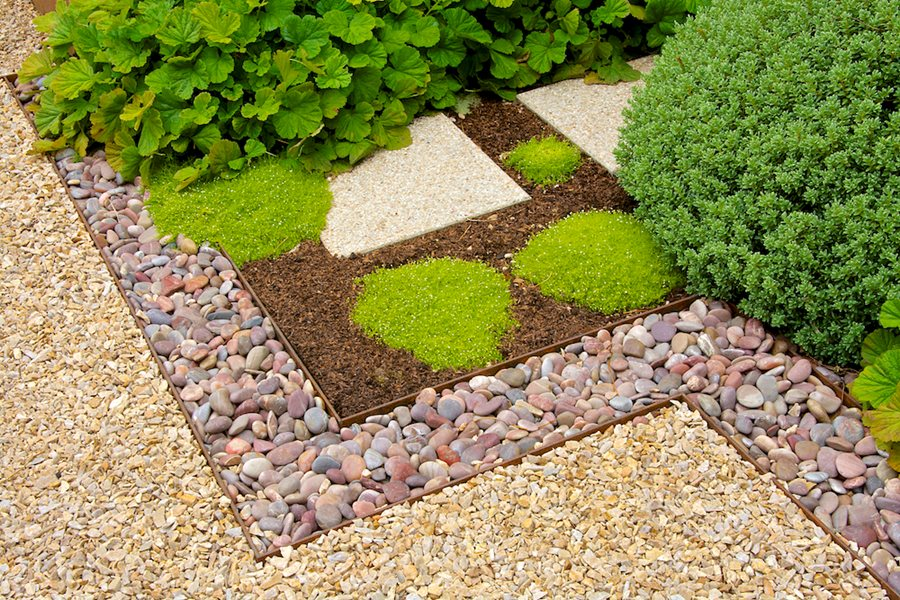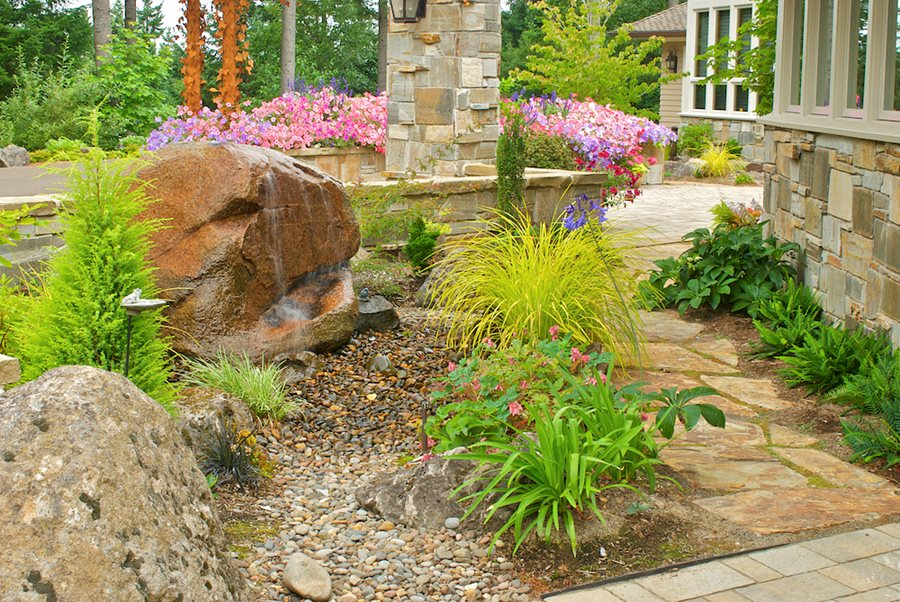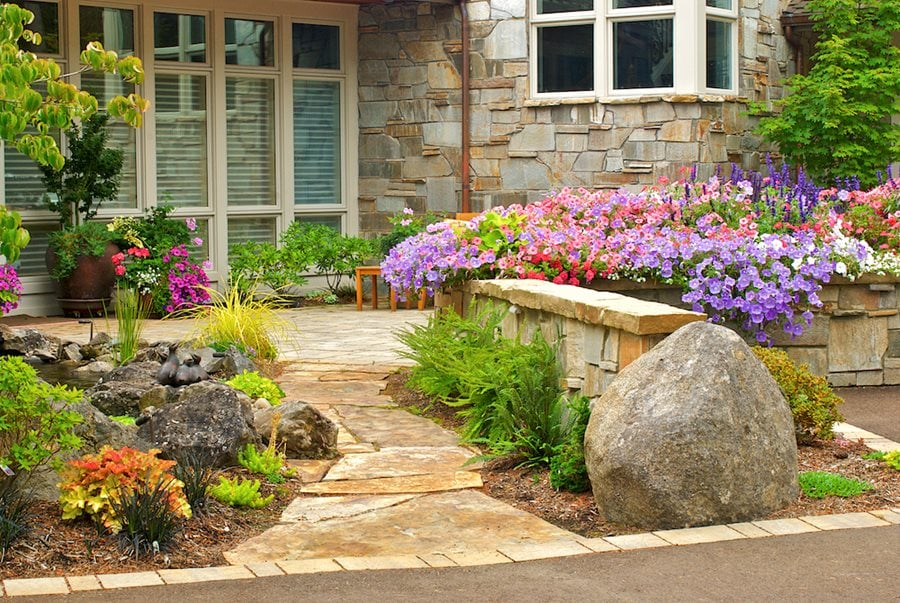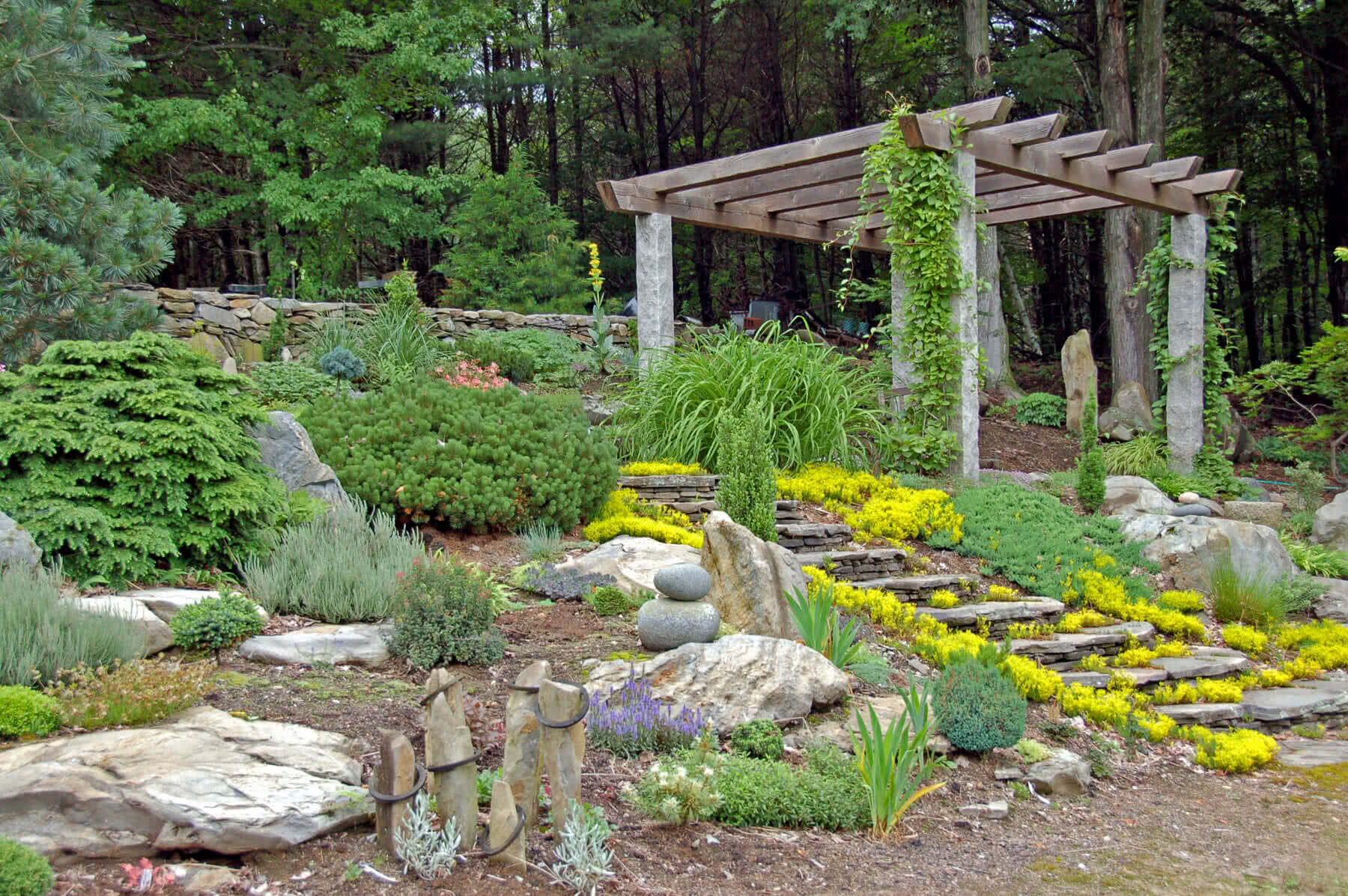Designing a Rock Garden: How to Grow and Use Culinary Herbs
Rock gardens offer a perfect environment for growing culinary herbs, combining beauty with functionality in your landscape. With their Mediterranean origins, many popular cooking herbs thrive in the well-drained soil and sunny exposure that rock gardens provide. Whether you have a sprawling yard or a compact patio space, designing a herb-focused rock garden can enhance your cooking experience while creating a striking visual feature in your outdoor space.
Why Combine Herbs and Rock Gardens?
Herbs and rock gardens make natural companions. Many culinary herbs originated in rocky, mountainous regions around the Mediterranean where soil conditions are lean and drainage is excellent. These same conditions can be recreated in a well-designed rock garden, providing the perfect growing environment for flavorful herbs.
Benefits of growing herbs in a rock garden include:
- Natural drainage: Prevents root rot in herbs that dislike soggy conditions
- Heat retention: Rocks absorb heat during the day and release it at night, extending your growing season
- Visual interest: Combines the textural variety of herbs with the solid permanence of stone
- Space efficiency: Maximizes growing area by utilizing vertical space
- Low maintenance: Requires less watering and weeding than conventional gardens
According to the USDA Natural Resources Conservation Service, proper rock placement can create microclimates that benefit different herb varieties. By strategically positioning rocks, you can create shaded spots for herbs that prefer cooler conditions while maximizing sun exposure for Mediterranean varieties.
Planning Your Herb Rock Garden
Selecting the Perfect Location
The first step in designing your herb rock garden is choosing the right location. Most culinary herbs require at least 6 hours of direct sunlight daily to develop their essential oils and flavors. Southern or western exposures typically provide ideal conditions.
Consider these factors when selecting your site:
- Sunlight: Most herbs need full sun, though some (like mint and chives) can tolerate partial shade
- Drainage: Select a naturally sloped area or plan to build up the site to ensure proper drainage
- Accessibility: Place your garden where you can easily harvest herbs while cooking
- Visibility: Position your rock garden where it can be appreciated as a landscape feature
Choosing the Right Rocks
Selecting appropriate rocks is crucial for both the aesthetic appeal and functionality of your herb garden. Native stones that match your local landscape will create the most natural appearance.
Rock types well-suited for herb gardens include:
- Limestone: Creates alkaline soil conditions perfect for Mediterranean herbs
- Sandstone: Porous texture helps with drainage and creates planting pockets
- Slate: Flat pieces make excellent pathway stones between herb sections
- Granite: Durable and weather-resistant for structural elements
- River rock: Smooth stones for decorative mulch and drainage
The size of your rocks should vary to create visual interest. Include some larger “anchor” rocks (1-3 feet in diameter) along with medium-sized stones (6-12 inches) and smaller rocks for filling gaps and creating planting pockets.

Selecting Herbs for Your Rock Garden
The best herbs for rock gardens are those that thrive in well-drained soil and full sun. Mediterranean herbs are particularly well-suited to these conditions and create an attractive, cohesive theme.
Popular Culinary Herbs for Rock Gardens
| Herb | Sunlight Needs | Water Requirements | Height (inches) | Spacing (inches) | Hardiness Zone |
|---|---|---|---|---|---|
| Thyme | Full sun | Low | 6-12 | 12-18 | 4-9 |
| Rosemary | Full sun | Low | 24-48 | 24-36 | 6-10 |
| Oregano | Full sun | Low | 12-24 | 12-18 | 5-12 |
| Sage | Full sun | Low | 18-24 | 18-24 | 4-10 |
| Lavender | Full sun | Low | 24-36 | 24-36 | 5-9 |
| Chives | Full to part sun | Moderate | 12-18 | 6-12 | 3-10 |
| Basil | Full sun | Moderate | 12-24 | 12-18 | Annual |
| Mint | Part sun | Moderate | 12-18 | 18-24 | 3-8 |
| Tarragon | Full to part sun | Moderate | 24-36 | 18-24 | 4-8 |
| Marjoram | Full sun | Low | 12-24 | 12-18 | 6-10 |
Consider incorporating herbs with varied heights, textures, and colors to create visual interest. Plant taller herbs like rosemary toward the back of the garden and creeping varieties like thyme near the front where they can cascade over rocks.
Constructing Your Herb Rock Garden
Site Preparation
Proper preparation of your site is essential for a successful herb rock garden. Follow these steps to prepare your garden area:
- Clear the area: Remove all existing vegetation, including grass and weeds.
- Improve drainage: If your soil is heavy clay, dig down 8-12 inches and add a 2-inch layer of coarse gravel at the bottom.
- Prepare soil mix: Create a mixture of topsoil, coarse sand, and organic matter in a 2:1:1 ratio. This provides good drainage while retaining some nutrients.
- Shape the site: Create contours and elevation changes to mimic a natural rocky environment and improve drainage.
For sloped sites, consider constructing terraces using larger rocks as retaining walls. This prevents soil erosion while creating distinct planting areas.
Rock Placement Techniques
Effective rock placement is both an art and a science. Follow these principles to create a natural-looking rock garden:
- Bury large rocks: Place at least one-third of each large rock below the soil surface for stability.
- Create planting pockets: Arrange rocks to form natural planting areas with adequate soil depth.
- Establish drainage paths: Position rocks to direct water flow away from sensitive herbs.
- Mimic natural formations: Study natural rock outcroppings to inform your design.
- Group in odd numbers: Arrange rocks in groups of three or five for a more natural appearance.
The National Park Service’s resource on landscaping with native stones offers excellent guidance on creating natural-looking rock formations that complement native ecosystems.
Planting Your Herbs
Once your rocks are positioned, you’re ready to plant your herbs. Follow these steps for successful establishment:
- Group herbs by water needs: Place herbs with similar water requirements together.
- Consider mature size: Allow adequate spacing for herbs to reach full size.
- Plant at proper depth: Most herbs should be planted at the same depth they were in their containers.
- Add mulch: Use small gravel or crushed rock as mulch to retain moisture while maintaining drainage.
- Water thoroughly: After planting, water deeply to help roots establish.
For perennial herbs like rosemary and thyme, position them where they can remain undisturbed for years. Annual herbs like basil can be placed in spots that might be replanted seasonally.
Maintaining Your Herb Rock Garden

Watering Techniques
Proper watering is crucial for herb rock gardens. Most culinary herbs prefer drier conditions and will develop stronger flavors with moderate drought stress.
Follow these watering guidelines:
- Water deeply but infrequently: This encourages deep root development.
- Water at soil level: Avoid wetting foliage, which can promote disease.
- Adjust seasonally: Increase watering during hot, dry periods and reduce during cooler seasons.
- Morning watering: Water early in the day to allow foliage to dry quickly.
Consider installing a drip irrigation system with separate zones for herbs with different water requirements. This ensures efficient water use while meeting the specific needs of each herb variety.
Seasonal Care and Maintenance
Your herb rock garden will require different care throughout the growing season:
Spring Tasks:
- Prune back woody herbs like rosemary and sage
- Divide overgrown perennial herbs like chives
- Add fresh soil mix to planting pockets
- Check for winter damage and replace plants as needed
Summer Tasks:
- Harvest herbs regularly to encourage bushier growth
- Remove flower heads (except when intentionally saving seeds)
- Monitor for pest issues in hot weather
- Provide supplemental water during drought periods
Fall Tasks:
- Harvest herbs for drying or freezing before frost
- Protect tender perennials with mulch
- Plant spring-flowering bulbs between rocks for early season interest
- Clean up dead annual herbs
Winter Tasks:
- Protect tender herbs with burlap or frost cloth
- Avoid walking on frozen garden areas to prevent damage
- Plan expansions or modifications for the coming season
- Order seeds for next year’s annual herbs
Harvesting and Using Your Culinary Herbs
Harvesting Techniques for Maximum Flavor
Proper harvesting techniques ensure the best flavor and encourage continuous production:
- Morning harvest: Harvest herbs in mid-morning after dew has dried but before the heat of the day.
- Regular trimming: Harvest frequently to encourage bushier growth and prevent flowering.
- Proper cutting: Use sharp scissors or pruners to avoid tearing stems.
- Harvest limit: Never remove more than one-third of the plant at once.
- Selective harvesting: Remove stems from various parts of the plant rather than just one section.
For woody herbs like rosemary and thyme, harvest by cutting stems rather than picking individual leaves. For leafy herbs like basil, pinch stems just above a set of leaves to encourage branching.
Preserving Your Herb Harvest
To enjoy your herbs year-round, consider these preservation methods:
- Drying: Hang small bundles of herbs upside down in a warm, dry location until completely crisp.
- Freezing: Chop herbs and freeze in ice cube trays with water or olive oil.
- Herb salts: Mix chopped herbs with sea salt for a flavored seasoning.
- Herb vinegars: Infuse herbs in vinegar for salad dressings and marinades.
- Herb butters: Mix chopped herbs into softened butter, shape into logs, and freeze.
According to the National Center for Home Food Preservation, properly dried herbs stored in airtight containers away from light can maintain good quality for up to one year.
Creative Culinary Uses
Beyond basic seasoning, herbs from your rock garden can enhance your cooking in numerous ways:
- Herb-infused oils: Steep fresh herbs in warm olive oil for flavored cooking oils.
- Herbal teas: Use mint, lemon thyme, or other aromatic herbs for refreshing beverages.
- Cocktail ingredients: Add herb sprigs to cocktails for aromatic garnishes.
- Compound butters: Mix chopped herbs into softened butter for topping grilled meats or vegetables.
- Herb crusts: Press chopped herbs onto the surface of meats before cooking.
- Herb syrups: Simmer herbs with sugar and water for unique dessert toppings.
Expanding Your Herb Rock Garden

Incorporating Non-Culinary Herbs
Once your culinary herb rock garden is established, consider expanding to include herbs with other uses:
- Medicinal herbs: Echinacea, chamomile, and calendula have traditional medicinal properties.
- Aromatic herbs: Scented geraniums, lemon verbena, and different lavender varieties add fragrance.
- Dye herbs: Woad, madder, and indigo can be used for natural fabric dyeing.
- Pollinator-friendly herbs: Anise hyssop, bee balm, and borage attract beneficial insects.
Creating Themed Rock Garden Sections
Consider designing themed sections within your rock garden:
- Italian herb garden: Basil, oregano, rosemary, and thyme for classic Italian dishes
- Tea garden: Mint, chamomile, lemon balm, and bee balm for herbal teas
- Salsa garden: Cilantro, oregano, and chives for Mexican-inspired dishes
- Fragrance garden: Lavender, lemon thyme, and scented geraniums for aromatic enjoyment
Conclusion
A well-designed herb rock garden combines practicality with beauty, providing fresh flavors for your kitchen while creating an attractive landscape feature. By understanding the growing requirements of culinary herbs and applying basic rock garden design principles, you can create a thriving garden that appeals to all the senses.
Whether you’re a culinary enthusiast, a gardening beginner, or an experienced landscaper, a herb rock garden offers an accessible project with immediate rewards. As your garden matures, you’ll develop a deeper appreciation for the relationship between growing conditions and herb flavors, all while enjoying the visual appeal of rocks and plants in harmonious combination.
Start small if you’re new to herb gardening, perhaps with just a few favorite culinary herbs and a modest rock arrangement. As your confidence grows, you can expand your collection and experiment with different design elements. Before long, you’ll be harvesting fresh, flavorful herbs from your own uniquely designed rock garden.






